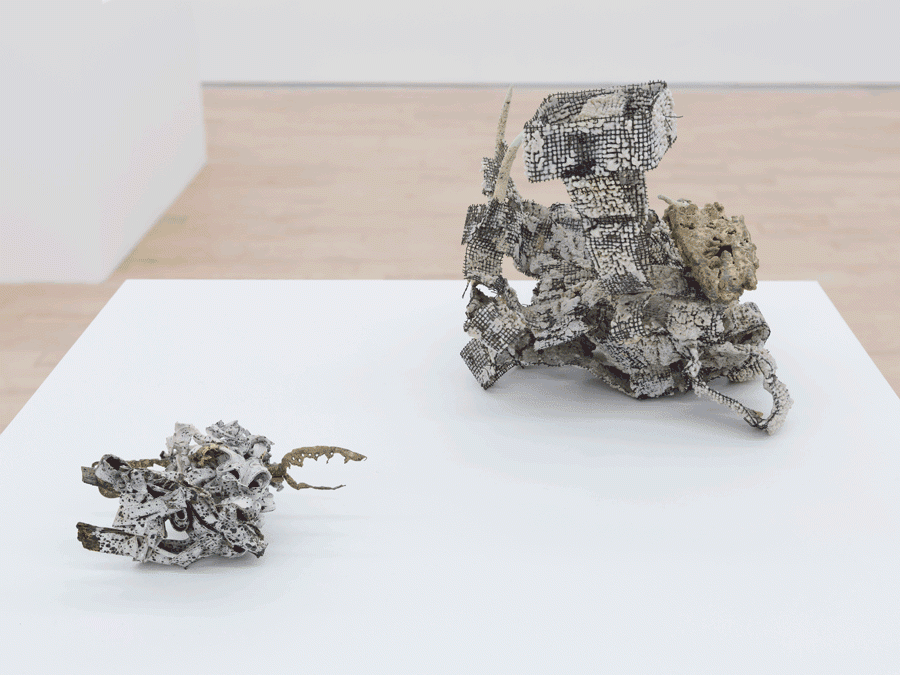The Sunday Painter, London, 18 November – 23 December 2016
On a faded, upside-down metal label, you can just make out ‘STILL LIFE’. They’re the only words that appear in the exhibition, barely there, loosely stuck onto the bottom of a bedhead hairdo sprouting out of the wall. The sculpture Almost off the Wall (2001) is an untidy bun of straggled wires that spray out of a pale blue rose of speckled, cracked ceramic, with a few bulldog clips around the sides pretending to hold it all together. The room is filled with similarly gnarled and rent artefacts, for which the term ‘still life’ seems apt, carrying with it the sense of arrangement, of attempting to freeze a moment for others to later pick up. This gathering of British artist Gillian Lowndes’s work is the largest in London in 20 years (she died in 2010), a set of almost two dozen intricate, bristling objects that were made between 1981 and 2009 but feel like rediscovered tools, small seemingly domestic tchotchkes and bits of fossilised beasts from another planet.
A spotted, diseased claw extends from a melted glob of wire and rubber in Small collage with puffball (1994). Mesh Collage with Loofah and Hooks (1991) is a tangled fight of white ceramic that has been pushed through knots of wire mesh to make small islands of miniature coral reefs. The familiar parts of the assemblages – for example bricks, cups, hair clippers and a can opener – ground them and let us see how these once-workaday objects have been transformed to become frayed and hairy. The process in which the works pass through the extreme heat of the kiln becomes a ready metaphor for any number of disasters: these objects look like they’ve been left underwater for 40 years, or are the dusty remains salvaged from a bombed-out house, unmoored relics of the apocalypse. Part of their unease is that unsteady presence – these disasters could have happened on our planet or another, but their presence, their survival, feel like a precious warning from a vanished culture. This was my first time encountering her work, and it was a quietly unsettling revelation; there’s an energy and experimentation to Lowndes’s art that makes a lot of the other futzing about with clay at the moment pale in comparison. Princelet Street Miden Collage (2005) is a bent fork attached to a used paint stick by disintegrating rubber bands and clips, a small branch of wire reaching up from one of the prongs like it was sprouting. More of her sculptures are part of the That Continuous Thing exhibition of ceramic work reopening Tate St Ives this month, although this work doesn’t need to be contextualised by pottery and the kiln.
The world these still lifes portray is a place of transformation, where clay is bone, and metal becomes hair, skin and fertile soil. For our planet’s unravelling present, Lowndes’s spindly creations are from an otherworldly past whose time has come.
From the March 2017 issue of ArtReview.
